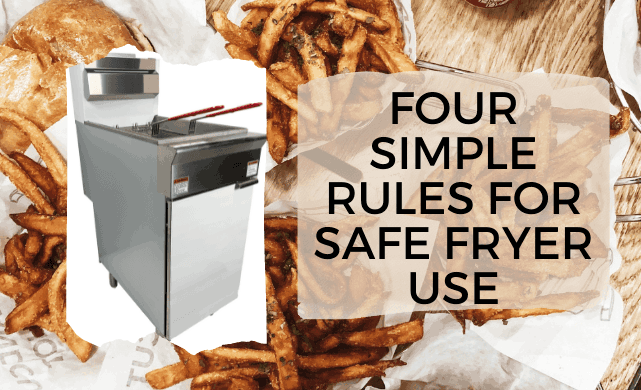Deep-fried foods are a major crowd-pleaser in the foodservice industry. There's something about a perfectly golden, crispy French fry that just makes people happy. If you can master the art of preparing delicious fried foods, your customers will keep coming back for more. However, before you dive into creating mouthwatering fried dishes, it's crucial to ensure that your workspace is safe. Operating a fryer requires adherence to certain guidelines to avoid accidents and maintain hygiene. Here are some straightforward rules to follow when using a fryer.
Rule One: Always Use Fryer Baskets When Adding or Removing Food.
Whether you're working with a floor fryer or a countertop model, these fryers typically come equipped with metal baskets designed specifically for their size. These baskets are essential for holding food as it cooks in the hot oil. In professional kitchens, we often refer to this process as "dropping" food into the fryer. To prevent accidents, it's vital to lower the basket slowly instead of dropping it abruptly, which could cause hot oil to splash out and lead to burns.
Rule Two: Keep the Fryer Area Spotless.
Maintaining cleanliness is key in any commercial kitchen, but it's especially important around fryers. Any leftover debris or grease can pose hazards. Staff should pay particular attention to the floor surrounding the fryer, as even the best non-slip shoes can lose traction on an oily surface. Regularly monitoring and wiping down any spills can greatly reduce the risk of slips and falls. Investing in non-slip mats is another effective way to enhance safety in this area.
Rule Three: Avoid Using Plastic Around the Fry Station.
Plastic materials can easily melt under the heat of hot oil, creating a dangerous situation. Stainless steel tools should always be used when handling oil manually. Furthermore, spatulas, buckets, or other accessories made of plastic can become damaged or destroyed by high temperatures. Storing hot oil in plastic containers is equally risky, as any damage to the container might compromise the quality of the oil itself.
Rule Four: Have a Fire Extinguisher Nearby.
Given the presence of hot oil, there's always a risk of fire. It's imperative to have a fire extinguisher close by and ensure that staff members are trained in its use. Not all extinguishers are suitable for grease fires; the best option is a Type K extinguisher. These are specifically designed for large grease and oil fires, commonly found in commercial kitchens. An extinguisher labeled for Class B or Class K is appropriate for grease-related fires.

Keywords:
Nonwoven Bags,Non Woven Bags Wholesale,Non Woven Bags Application,Non Woven Bags Color
JIANGSU KIND UNDERSTAND NEW MATERIAL TECHNOLOGY CO.,LTD , https://www.kindunderstand.com
![<?echo $_SERVER['SERVER_NAME'];?>](/template/twentyseventeen/skin/images/header.jpg)




